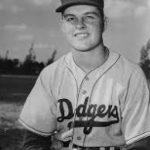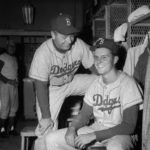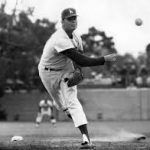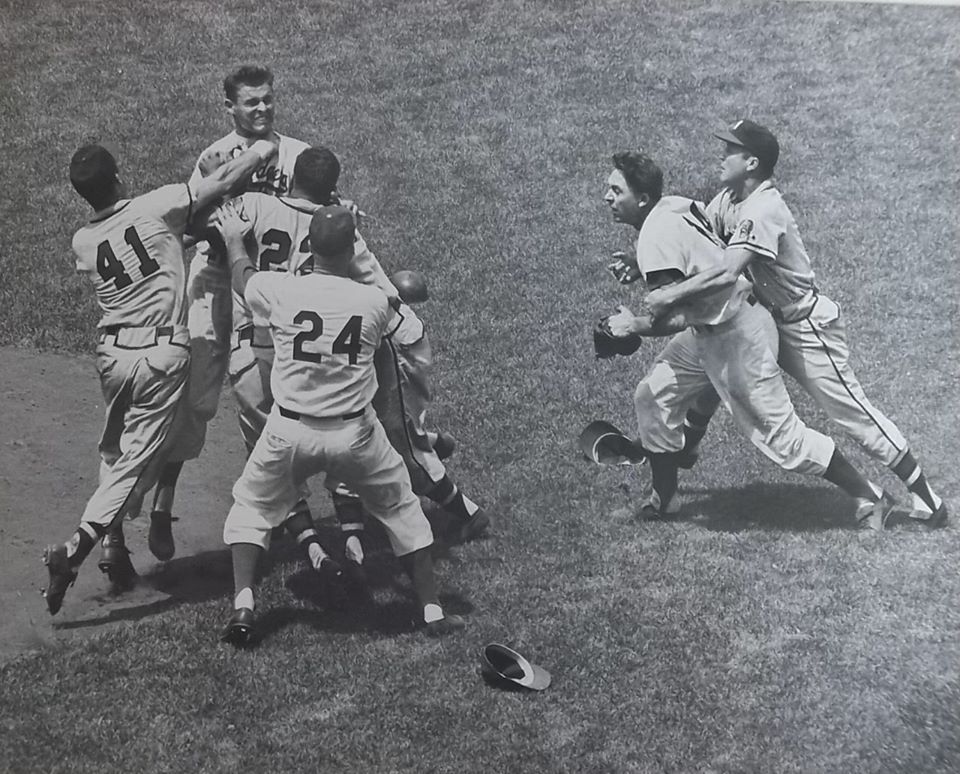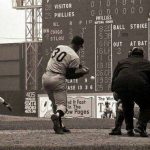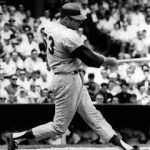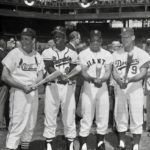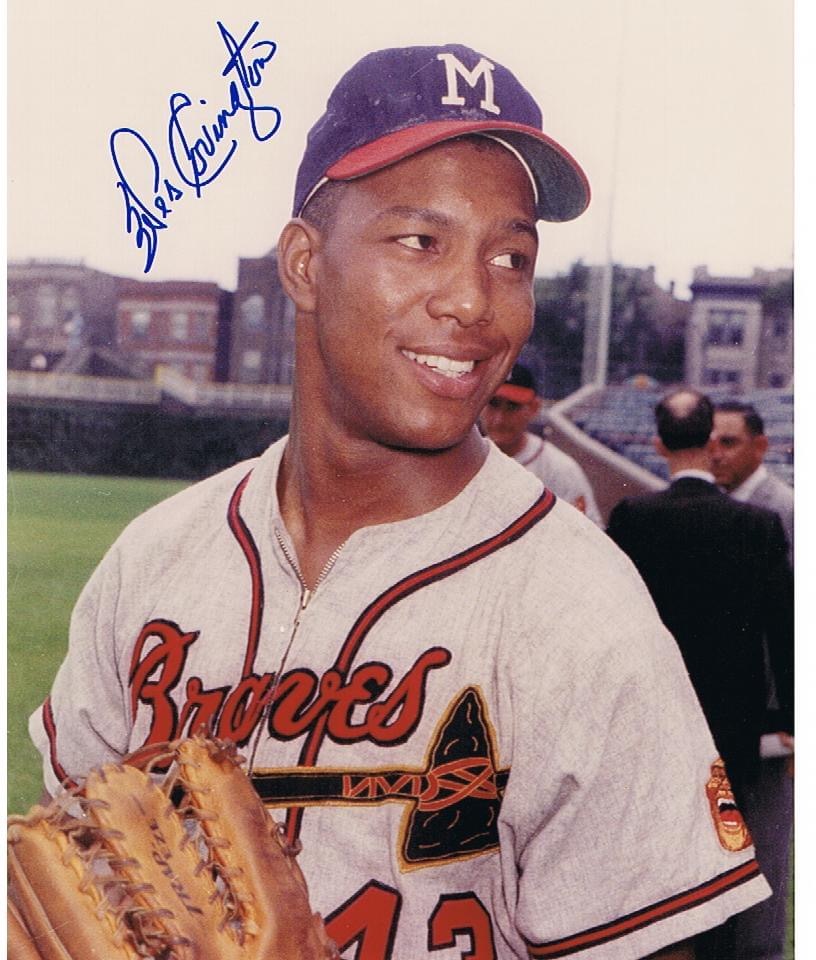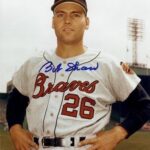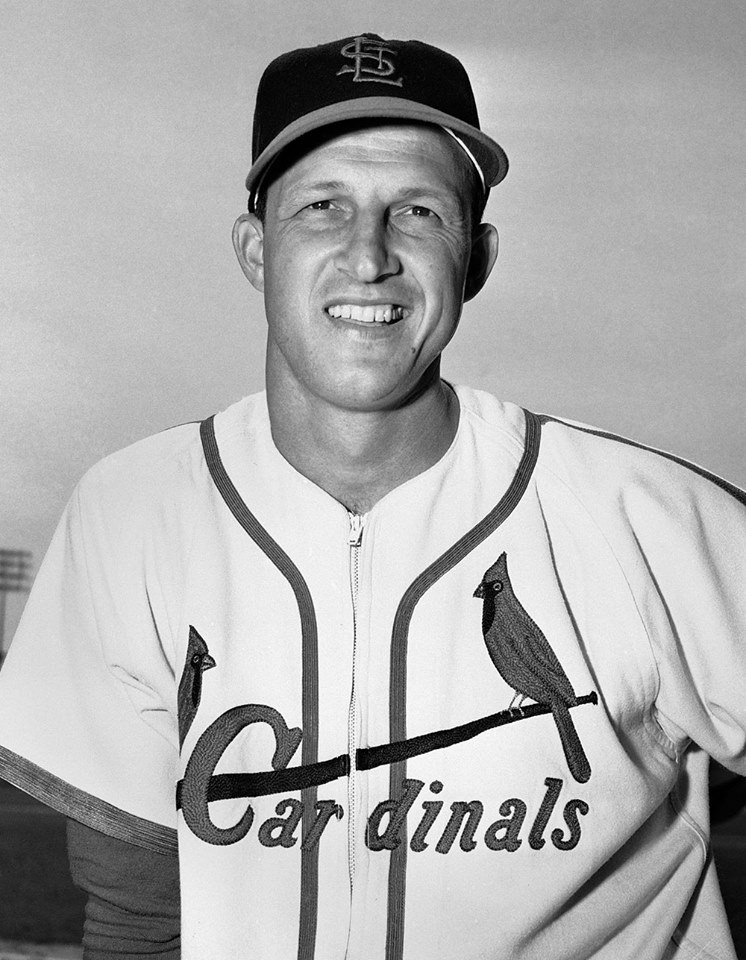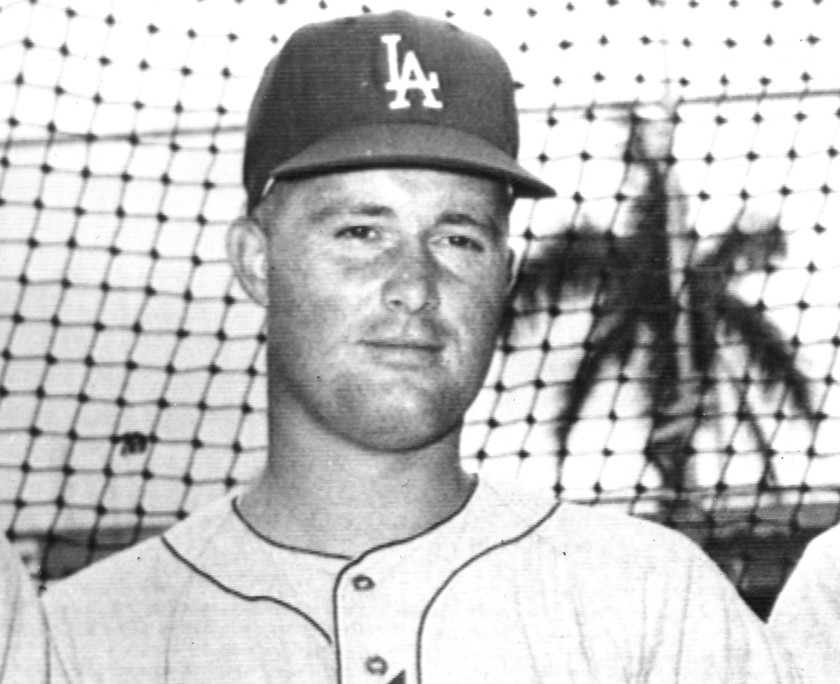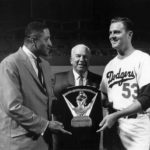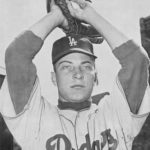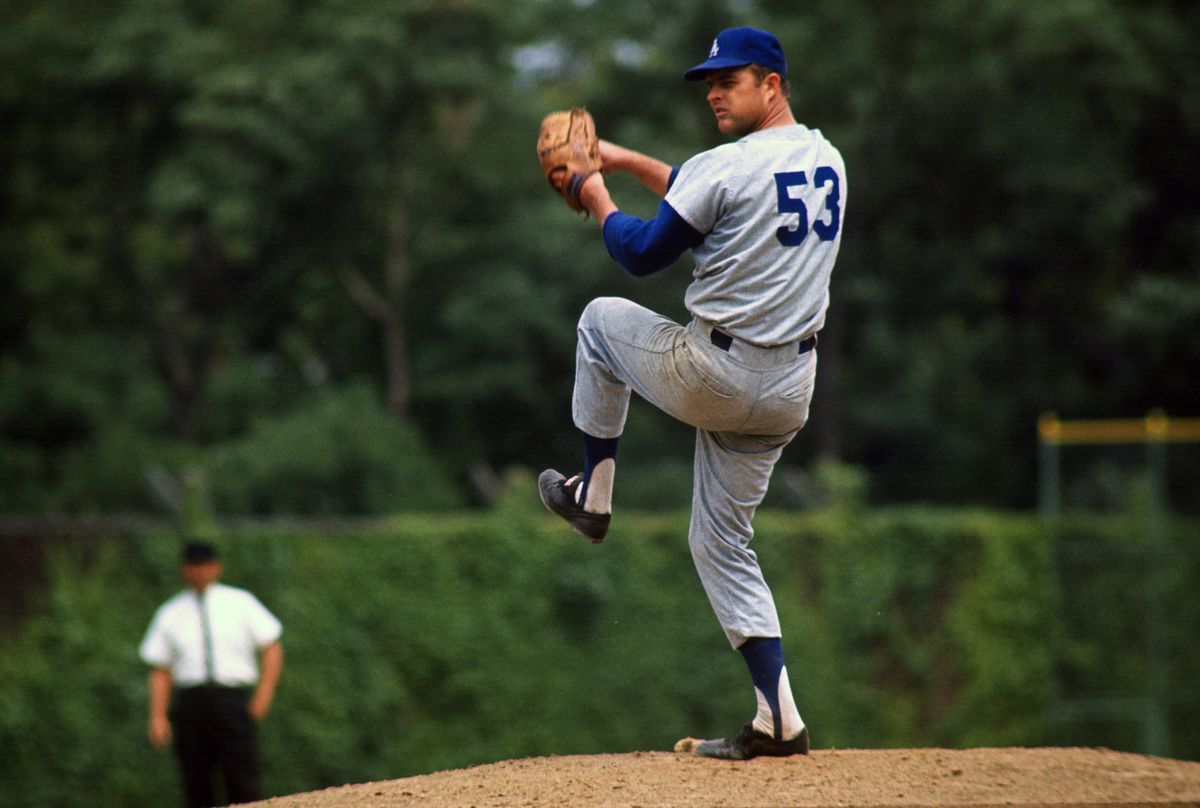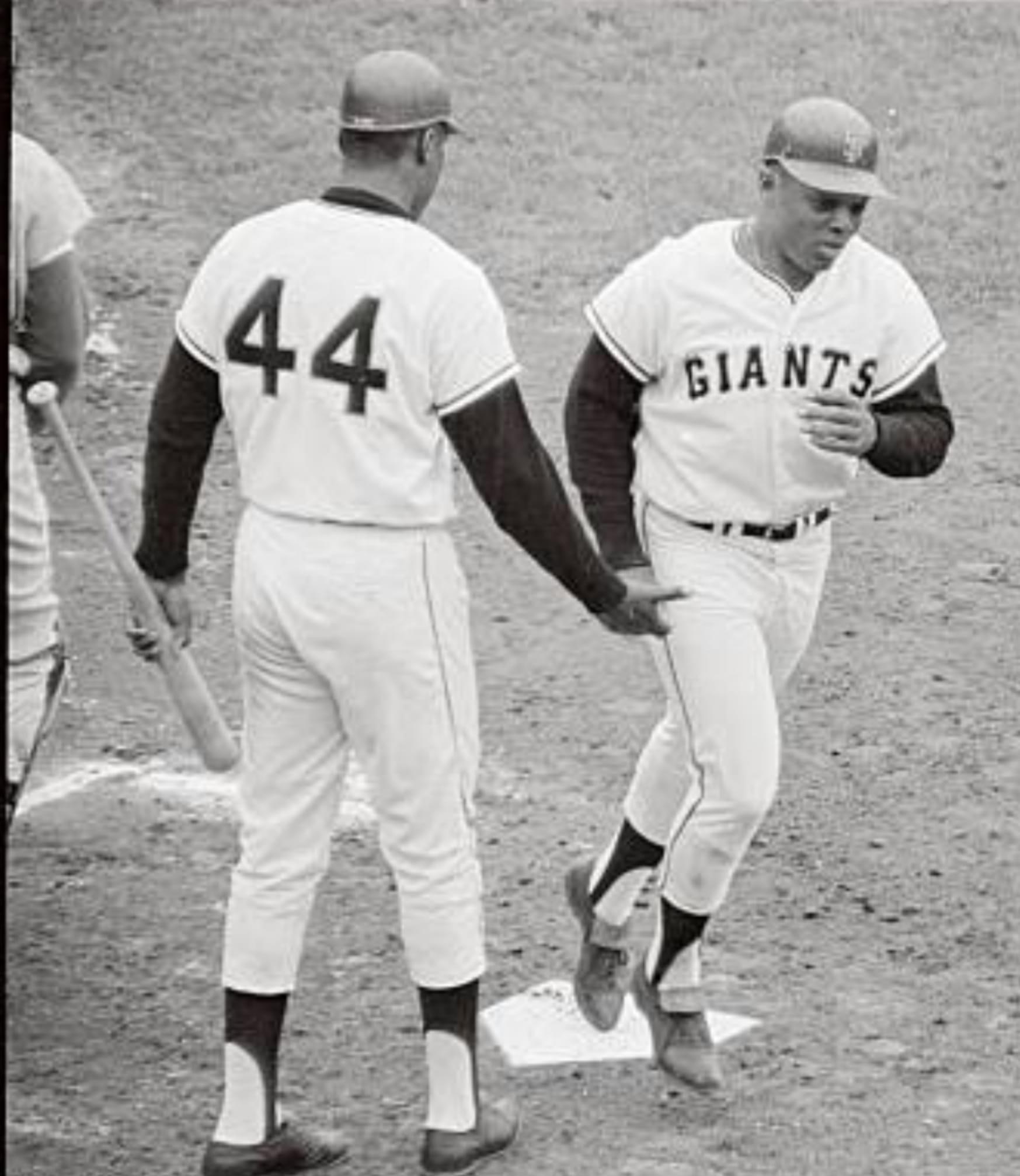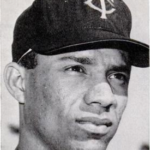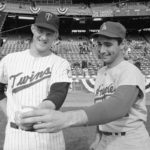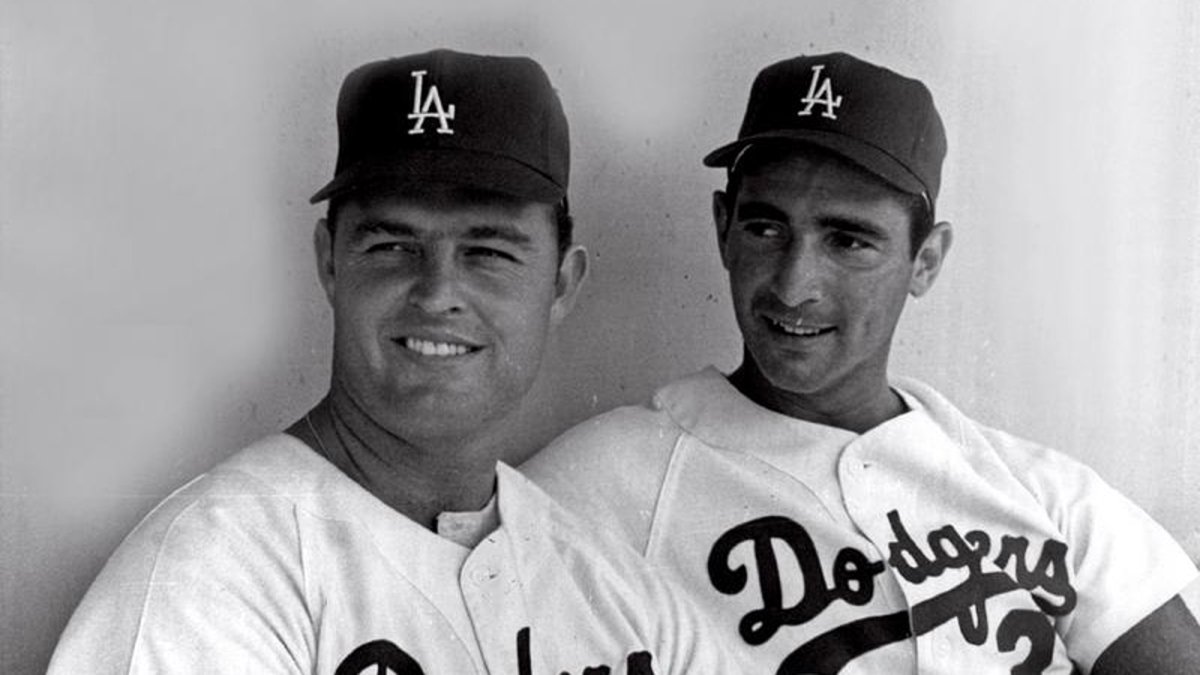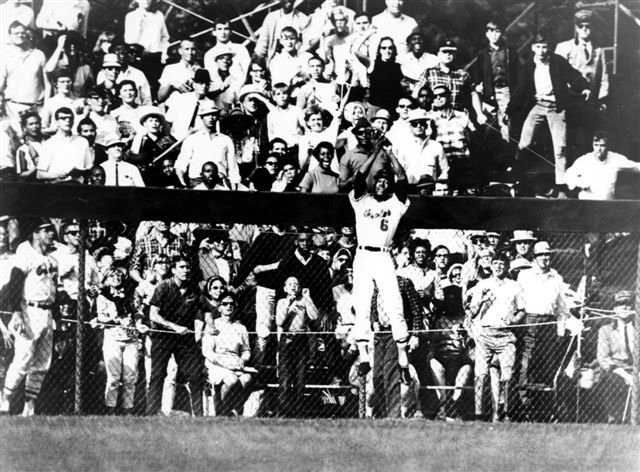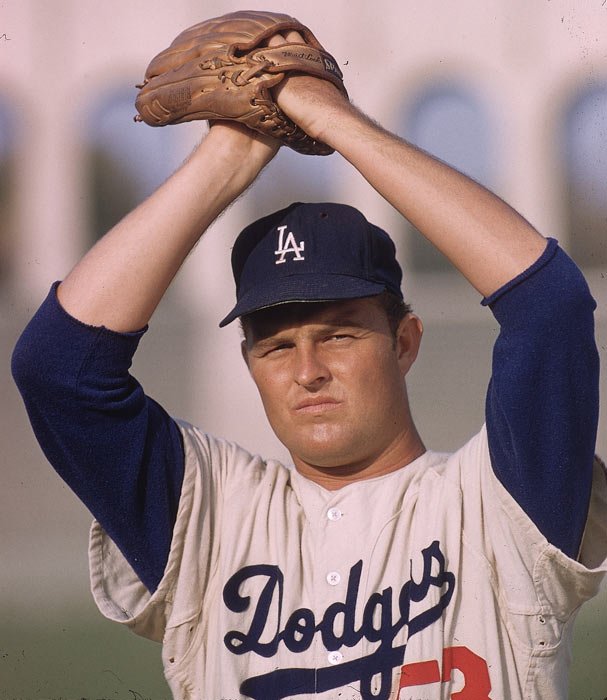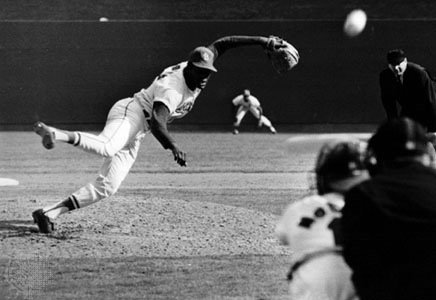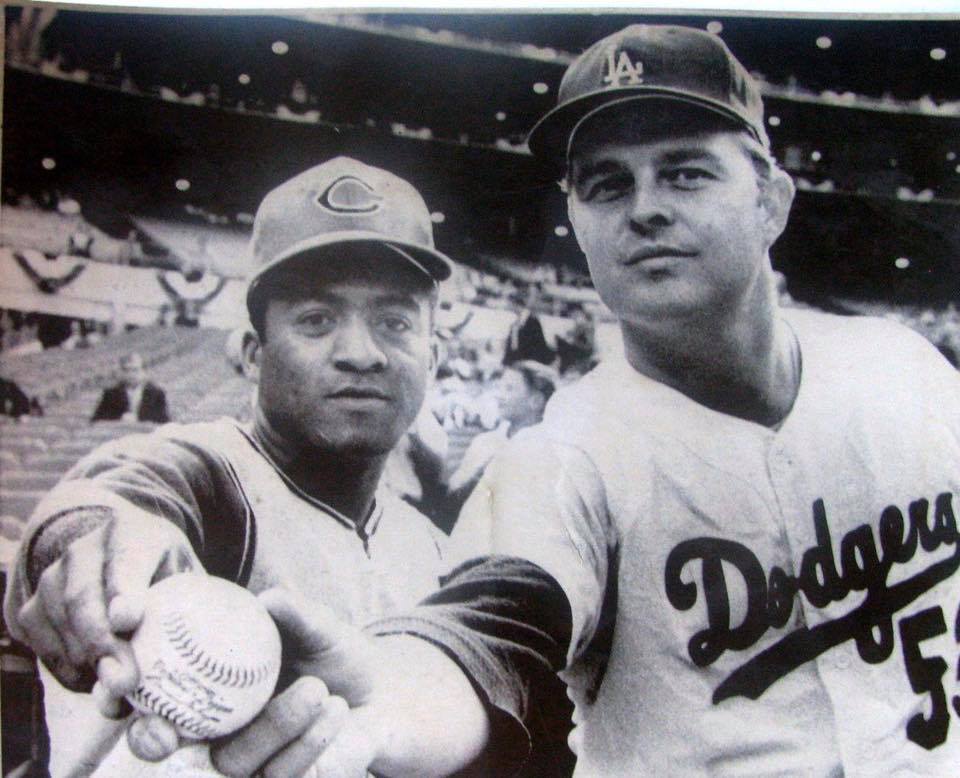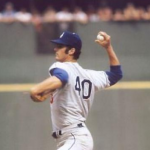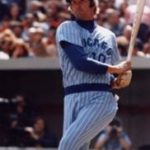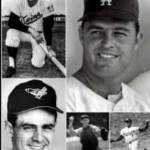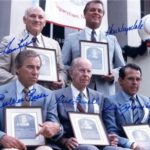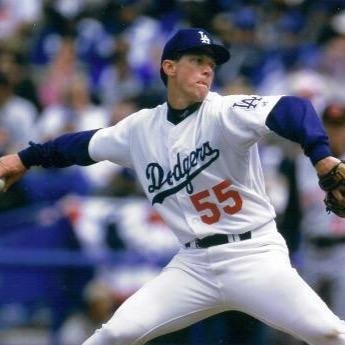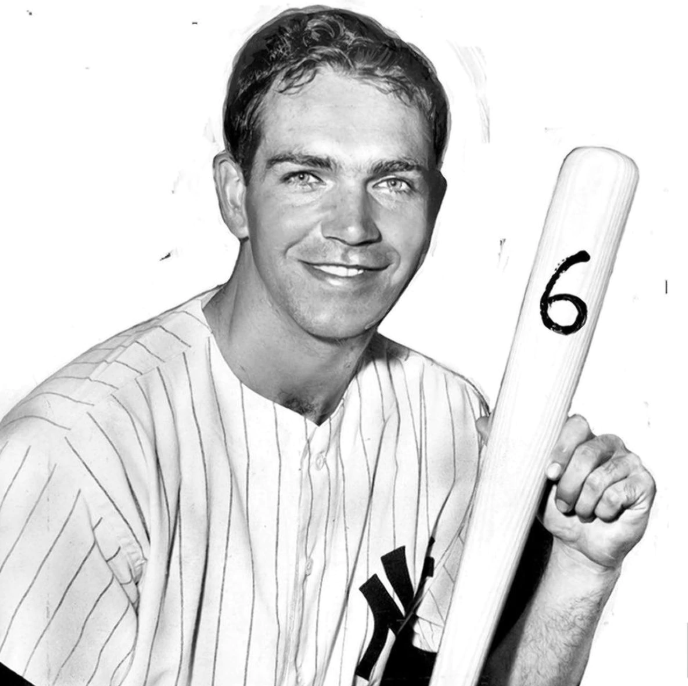Don Drysdale Stats & Facts
Don Drysdale Essentials
Position: Pitcher
Bats: Right • Throws: Right
6-5, 190lb (196cm, 86kg)
Born: July 23, 1936 in Van Nuys, CA
Died: July 3, 1993 in Montreal, Canada
Buried: Cremated
High School: Van Nuys HS (Van Nuys, CA)
Debut: April 17, 1956 (8,925th in MLB history)
vs. PHI 1.0 IP, 0 H, 0 SO, 1 BB, 0 ER
Last Game: August 5, 1969
vs. PIT 6.0 IP, 8 H, 2 SO, 1 BB, 2 ER
Hall of Fame: Inducted as Player in 1984. (Voted by BBWAA on 316/403 ballots)
View Don Drysdale’s Page at the Baseball Hall of Fame (plaque, photos, videos).
Full Name: Donald Scott Drysdale
Nicknames: Big D or Airedale
View Player Bio from the SABR BioProject
Nine Players Who Debuted in 1956
Frank Robinson
Luis Aparicio
Bill Mazeroski
Curt Flood
Don Drysdale
Moe Drabowsky
Tito Francona
Charlie Lau
Whitey Herzog
The Don Drysdale Teammate Team
C: Roy Campanella
1B: Jackie Robinson
2B: Junior Gilliam
3B: Jim Lefebvre
SS: Maury Wills
LF: Ron Fairly
CF: Duke Snider
RF: Willie Davis
SP: Sandy Koufax
SP: Johnny Podres
SP: Claude Osteen
SP: Don Sutton
SP: Bill Singer
RP: Ron Perranoski
M: Walter Alston
Notable Events and Chronology for Don Drysdale Career
A tall, charismatic sidearmer, Drysdale combined an explosive fastball with great control to become one of baseball’s premier power pitchers. His greatest personal achievement came in 1968, “the year of the pitcher.” He logged six consecutive shutouts en route to a since-broken record 58.2 consecutive scoreless innings. He pitched his record-tying fifth shutout on the day of the California presidential primary and was congratulated by Robert Kennedy in the speech he gave just before he was assassinated.
Drysdale’s real glory days were earlier, when he was paired with Sandy Koufax as the most feared pitching duo of the 1960s. The Dodgers finished the regular season in first place in four out of five years from 1962 to 1966 without an overwhelming offense. The two staged a highly publicized joint holdout following their combined 49-20 record in 1965. They sought a three-year, $1.05 million contract to be divided evenly. Drysdale eventually signed for $110,000, quite a bit better than the $35,000 he made when he won 25 in 1962. He summed up his perspective in 1980: “When we played, World Series checks meant something. Now they just screw up your taxes.”
Drysdale was a workhorse, leading the NL in games started every year from 1962 to 1965, as well as in innings pitched in 1962 and 1964. He never missed a start. He also led in shutouts in 1959. One of the best-hitting pitchers of his day, he led NL pitchers in homers four times, twice tying the NL record of seven. His career total of 29 ranks second to Warren Spahn’s in NL history. In 1965 he hit .300 and slugged .508, pinch hit frequently, and achieved the rare feat of winning 20 and hitting .300 in the same year. In 1958 he slugged .591.
Drysdale’s tenure spanned Dodger eras. He won 17 in their last year in Brooklyn, and pitched the team’s first West Coast game (a loss at San Francisco). When he retired, he was the last Brooklyn player left on the Dodgers. He had the longest career played under a single manager – 13 years with Walter Alston. When Drysdale came up, he played with Duke Snider and the “Boys of Summer.” He retired from a staff that included Don Sutton, who pitched through the 1980s.
Knocking down hitters was a major tool in Drysdale’s pitching repertoire. He set the 20th-century NL career record by hitting 154 batters, and led the NL in that category a record five times. His philosophy on the knockdown pitch was simple – “If one of our guys went down, I just doubled it. No confusion there. It didn’t require a Rhodes scholar.”
A fixture at All-Star time, Drysdale holds All-Star records with eight games pitched, five starts, 19.1 innings, and 19 strikeouts. He went 2-1, 1.40, allowing only 10 hits.
Drysdale was one of the most appealing Dodgers to the Hollywood entertainment community. He appeared on numerous TV shows including “You Bet Your Life,” “The Donna Reed Show,” and “The Brady Bunch.” After his playing days, Drysdale became an announcer for the Angels and the White Sox before returning to the Dodgers. “Interviews were the hardest thing for me at first,” he said. “I felt so damn funny asking players questions when I already knew the answers.”
He was married to Basketball Hall of Famer Ann Meyers from 1986 to 1993. When Ann was elected to the Basketball Hall of Fame in May 1993, it was the first marriage of Hall of Famers from two of the four major sports. His father, Scott Drysdale, worked for a time as a scout for the Dodgers.
Drysdale died in Montreal, QC on July 3, 1993. He was in Montreal as part of the Dodgers’ broadcasting team. He did not report to the ballpark that day and was later found dead in his room at the team hotel. Vin Scully broke the news of Drysdale’s death live on air during the game that Drysdale was to announce with Scully.
Quotes by Don Drysdale
“A torn rotator cuff is a cancer for a pitcher and if a pitcher gets a badly torn one, he has to face the facts, it’s all over baby.”
“If they knocked two of your guys down, I’d get four. You have to protect your hitters.”
“In Brooklyn, it was as though you were in your own little bubble. You were all part of one big, but very close family, and the Dodgers were the main topic of everybody’s conversations and you could sense the affection people had for you. I don’t know that such a thing exists anymore.”
“I hate all hitters. I start a game mad and I stay that way until it’s over.”
“It’s a bottom line business where a lot of gray suits are brought in and then, within two years, these guys suddenly know everything about baseball.”
“My own little rule was two for one. If one of my teammates got knocked down, then I knocked down two on the other team.”
“Some of these guys wear beards to make them look intimidating, but they don’t look so tough when they have to deliver the ball. Their abilities and their attitudes don’t back up their beards.”
“The pitcher has to find out if the hitter is timid, and if he is timid, he has to remind the hitter he’s timid.”
“When I throw a curve that hangs and it goes for a hit, I want to chew up my glove.”
“When we played, World Series checks meant something. Now all they do is screw your taxes.”
“I always used to think that he [Hank Aaron] had a lot of Stan Musial in his stance. From the pitcher’s mound they both seem to coil at you. The only sensible thing – if you couldn’t get the manager to let you skip a turn against him – was to mix the pitches and keep the ball low, and if you were pitching to spots it was important to miss bad. If you missed good, and the ball got in his power zone, sometimes you were glad it went out of the park and was not banged up the middle.”
“What being around [Sal] Maglie did for me was to confirm this idea in my mind and refine it. It was part of the game. I watched Maglie, I listened to Maglie, and it all sunk in. It just sort of clicked.”
Quotes about Don Drysdale
“Batting against Don Drysdale is the same as making a date with a dentist.”
— Dick Groat
“Don Drysdale would consider an intentional walk a waste of three pitches. If he wants to put you on base, he can hit you with one pitch.”
— Mike Shannon
“I hated to bat against Drysdale. After he hit you he’d come around, look at the bruise on your arm and say, ‘Do you want me to sign it?'”
— Mickey Mantle
“I personally think it’s too bad if a batter gets hit crowding the plate. I know that Don Drysdale, Larry Sherry and Stan Williams felt the same way when they pitched for the Dodgers in the late 1950s and early ’60s. That was the formula I was raised on. Come to think of it, I’ve never seen a batter apologize for smashing a line drive off some part of a pitcher’s torso”
— Roger Craig, Inside Pitch
“The trick against Drysdale is to hit him before he hits you.”
— Orlando Cepeda
“Home plate is 17 inches wide. But to Don Drysdale it is divided into three parts – the inside four inches, the middle nine inches, and the outside four inches. To him only the middle part belongs to the hitter; the inside and outside parts belong to the pitcher.”
— Dave Anderson, New York Times
Links:
- Don Drysdale – Baseball Hall of Fame Member biography
- dondrysdale.com Official web site
- Don Drysdale at Find a Grave
- Branch Rickey’s 1954 amateur scouting report on Drysdale, at the Library of Congress.
- Don Drysdale at the Internet Movie Database
@ET-DC@eyJkeW5hbWljIjp0cnVlLCJjb250ZW50IjoicG9zdF90YWdzIiwic2V0dGluZ3MiOnsiYmVmb3JlIjoiTGVhcm4gTW9yZSBhYm91dCB0aGUgdGVhbXMsIHBsYXllcnMsIGJhbGwgcGFya3MgYW5kIGV2ZW50cyB0aGF0IGhhcHBlbmVkIG9uIHRoaXMgZGF0ZSBpbiBoaXN0b3J5IC0gLSAtIC0gLSAtIC0gIiwiYWZ0ZXIiOiIiLCJsaW5rX3RvX3Rlcm1fcGFnZSI6Im9uIiwic2VwYXJhdG9yIjoiIHwgIiwiY2F0ZWdvcnlfdHlwZSI6InBvc3RfdGFnIn19@
Factoids, Quotes, Milestones and Odd Facts
Played For
Brooklyn Dodgers (1956-1957)
Los Angeles Dodgers (1958-1969)
Similar: Milt Pappas and Catfish Hunter
Linked: Sandy Koufax… Drysdale broke Walter Johnson’s record of consecutive scoreless innings, set in 1913… Orel Hershiser passed Drysdale in his final start of 1988, running his shutout streak to 59 innings.
Best Season, 1962
The 25-year old righty led the NL with 25 wins, winning the major league Cy Young Award. He also paced the loop in innings and K’s.
Awards and Honors
1962 ML Cy Young
Post-Season Appearances
1956 World Series
1959 World Series
1963 World Series
1965 World Series
1966 World Series
Factoid
Only Warren Spahn hit more homers than Don Drysdale among pitchers in National League history. Drysdale hit 29, including seven in one season twice.
Where He Played: Drysdale started 465 games and was relieved in 53.
Big League Debut: April 17, 1956
April 17, 1956 — the same day that Frank Robinson (Cincinnati) and Luis Aparicio (White Sox) made their big league debuts.
Feats: Drysdale’s 58 2/3 consecutive shutout inning streak was unmatched for 20 seasons, until broken by Dodger right-hander Orel Hershiser in September, 1988.
Transactions
Before 1954 Season: Signed by the Brooklyn Dodgers as an amateur free agent.
The Holdout
Drysdale and Koufax teamed to set down enemy batters, leading the Dodgers to World Series appearances in 1963 and 1965. After the season, in which the duo went 49-20, they teamed to fight the front office, demanding more money and security. Both wanted long-term contracts, and at the time most of the media were against them. They sought a three-year, $1.05 million contract to be divided evenly. Drysdale eventually signed for $110,000 and Koufax for slightly more.
Factoid
Don Drysdale pitched the first west coast game in Los Angeles Dodgers’ history, losing to the Giants in San Francisco in 1958.
All-Star Selections
1959 NL
1961 NL
1962 NL
1963 NL
1964 NL
1965 NL
1967 NL
1968 NL
Replaced
Carl Erskine, who at age 30, was just about through as a starting pitcher.
Replaced By
The 1969 Dodgers relied heavily on their three top starting pitchers: Claude Osteen, Bill Singer, and Don Sutton, to start 122 of their games. Drysdale, in his last season, was a fifth starter, getting 12 starts.
Best Strength as a Player
Intimidation. Drysdale was the most feared brushback pitcher of the 1960s. He knocked down batters, brushed them off the plate, and hit them if he needed to.
Largest Weakness as a Player
Durability. Drysdale was done at the age of 32, despite being a very large and athletic man. His arm just gave out


